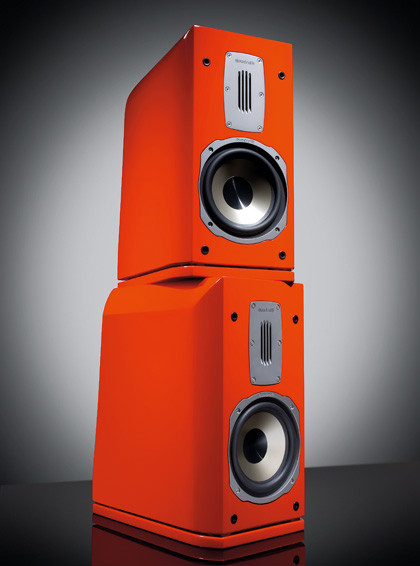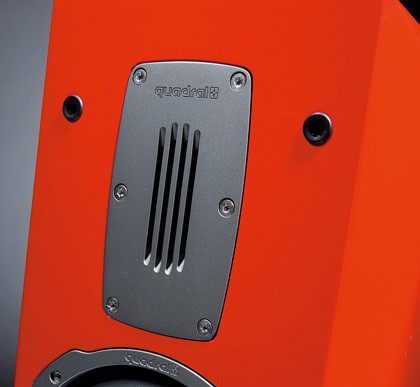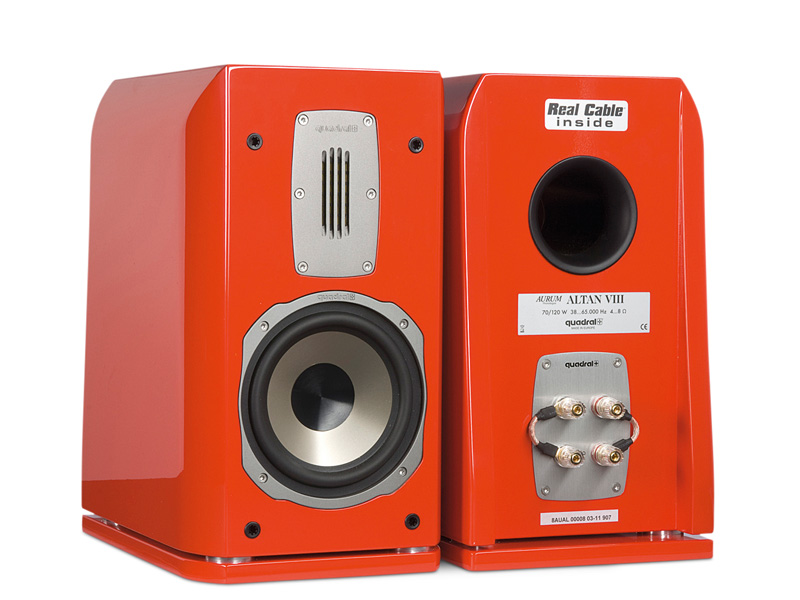TechRadar Verdict
Pros
- +
Wide dynamic range and fine coherence
- +
Sweet and smooth top end
Cons
- -
Quite costly for a two-way standmount, especially in some finishes
Why you can trust TechRadar
We actually reviewed a couple of Quadral loudspeakers a few years back, but at the time UK distribution was sporadic. The good news is that this high-end German company is back, via a subsidiary operation based in Stafford and covering Britain and Ireland.
Aurum actually operates as the high-performance upmarket sub-brand of the main Quadral operation and is only sold through specialist dealers.
There's just one (decidedly extensive) range of ten loudspeakers (plus a handful of high-end amplifiers and CD players), of which the Altan VIII is one of the smaller models.It's a simple two-way standmount, albeit with quite a number of luxury touches.
Solid and substantial

Let's start with the enclosure. It's a medium-sized standmount, portloaded at the rear and with an internal volume estimated between 10 and 15 litres. Port-blocking foam bungs are supplied should this give better results in conjunction with the specific room characteristics.
Judging by the weight, build is very substantial and the shape is unusual, too. The front and top edges of the sides are heavily chamfered and deeper at the bottom than the top (overhanging the back panel here).
The speaker also has a separate base (presumably for cosmetic reasons). The standard version of the Altan comes in a choice of three real-wood veneers at £1,280 per pair; in piano high-gloss white or black for £1,380 per pair; or in a choice of lacquer colours for £1,570 per pair. Our example came in a slightly-brighter-than-pillar-box red and certainly looks the business.
The drive units are Quadral's own developments, with a 170mm main bass/mid driver that uses an alloy of aluminium, titanium and magnesium (known as Altima) for its 115mm cone. Claimed to be both stiff and light, it's driven from a powerful motor.
Ribbons rule?
The VIII in the name refers to the eighth generation of Quadral's ribbon-type tweeter. Indeed, few companies have done more to proselytise an 'alternative' approach to tweeters then Quadral.
One consequence of the diaphragm shape is a tendency to beam the highest frequencies in the vertical plane. Reducing any ceiling reflections should help focus the stereo image at some expense in terms of airiness.
Twin high-quality multi-way terminals are fixed directly through an alloy plate, using wire for the optional links. Internal wiring from French operation Real Cable uses bi-metal (BM-series) audiophile cable, combining copper (for bass) and silver for treble.
The network proper uses metal-layer resistors and high-quality polypropylene film capacitors. An optional grille is supplied and is probably better removed, though this does leave unsightly visible mounting lugs.
Setting up for optimum results took a little time. It's important to be as close as possible to the vertical axis of the ribbon tweeter diaphragm and in our case, at least, this involved adjusting the spikes of our 600mm stands to tilt backwards a few degrees. Exactly what is required here will, of course, depend on individual circumstances: Getting the right angle will depend on how high your ears are in relation to the height of the tweeter and how far away you like to sit.
Next there's the siting and the foam bungs to consider. The Altan VIII has a large and active port and it's tuned to around 52Hz, which unfortunately coincides with a major reinforcement mode in our listening room (and indeed many others). Inevitably there's some excess around 50Hz when the port is active, even with the speakers located well clear of walls, though in practice this proved only a minor drawback and actually helped to compensate for a slight tendency to forwardness in the upper midband.
However, when using swept sinewaves at a fairly high level, in order to establish the best configuration and positioning, the 20Hz starting frequency generated clearly audible harmonic distortion through the port. (The distortion completely disappeared when the bungs were inserted.)
It should be added, however, that it was never noticeable even when playing music loud.
The bunged-up option

The alternative approach is to use the speakers with the bungs inserted to block the ports. This too worked well, though it was necessary to position the speaker quite close to a wall in order to provide some bass boost.
Leaving a gap of 20cm seemed to work best, though the upper-mid prominence was a little more obvious in this arrangement, so the speaker could start to become a little too aggressive when it was used with the volume turned up high. Indeed, although the differences were quite subtle, free space siting with ports left open was considered marginally the best all-round compromise, especially when playing music loud.
However, voice band articulation is somewhat enhanced, especially when listening at low levels, when the speaker is close to a wall with the bungs inserted. There isn't a right or a wrong here: both approaches work well and the differences will be largely a matter or personal taste and the specific room acoustics.
Whichever version of bass alignment and positioning is chosen, a fundamental strength of this speaker lies in its impressive dynamic range. This is partly due to the minimal low-frequency coloration generated by a very 'quiet' enclosure and it's also a typical characteristic of a metal alloy main driver diaphragm, though the latter probably contributes to a touch of uppermid hardness and congestion.
Many compact speakers tend to sound a little cold and clinical, due to a lack of energy in the upper bass and lower midband. When used with its ports open, the Altan VIII entirely avoids this problem and instead it delivers the sort of rich and warm sonic character that is normally associated with significantly larger models.
Smooth and laid-back
Although there was an occasional hint of chestiness on male speech, the warm character is both unusual and very welcome, though it does result in a slightly 'laid back' overall character that tends to underplay expressiveness further up the band.
This speaker doesn't have the most dynamic or vigorous sound around, but instead delivers very easy-on-the ears long-term listening. The top end is notably smooth, even-handed and very well judged, and the crossover integration is effectively seamless, ensuring a very coherent overall sound.
Stereo images are very well focused across a finely drawn lateral soundstage, but both depth perspectives and transparency seem a trifle constrained.
While it's true that the Altan VIII lacks a little ultimate bass weight, in several ways it combines the best characteristics of floorstanders and standmounts, delivering a scale of sound that belies its compact dimensions, with good agility and generally well-controlled coloration.
Follow TechRadar Reviews on Twitter: http://twitter.com/techradarreview
